New York
About Andrew Cusack
 Writer, web designer, etc.; born in New York; educated in Argentina, Scotland, and South Africa; now based in London.
Writer, web designer, etc.; born in New York; educated in Argentina, Scotland, and South Africa; now based in London. read more
News
Blogs
Reviews & Periodicals
Arts & Design
World
France
Mitteleuropa
Knickerbockers
Argentina
The Levant
Africa
Cape of Good Hope
Netherlands
Scandinavia
Québec
India
Muscovy
Germany
Academica
Marinus Willett

In one of the galleries of the Metropolitan Museum’s American wing, behind the Tuckahoe-marble façade of the old Assay Office (moved here from Wall Street), hangs this portrait of Col. Marinus Willett of the Continental Army’s 5th New York Regiment.
Born in 1740, the second of thirteen children, Willett attended King’s College before being commissioned a lieutenant in a New York provincial regiment during the Seven Years’ War (or French and Indian War as it’s known more locally). (more…)
Wall Street
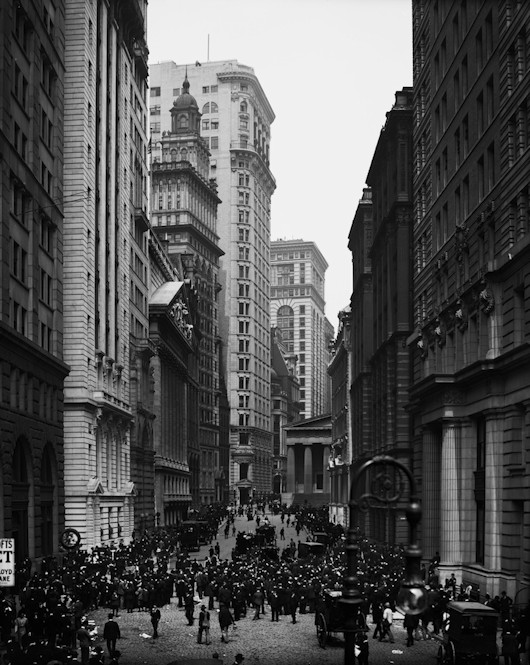
Well, actually it’s Broad Street looking down past the New York Stock Exchange to Federal Hall, which itself is on Wall Street.
Most of Broad Street was originally a canal (hence its width) but in 1676 it was filled in and laid out as a street.
The Old Dutch Church of Sleepy Hollow
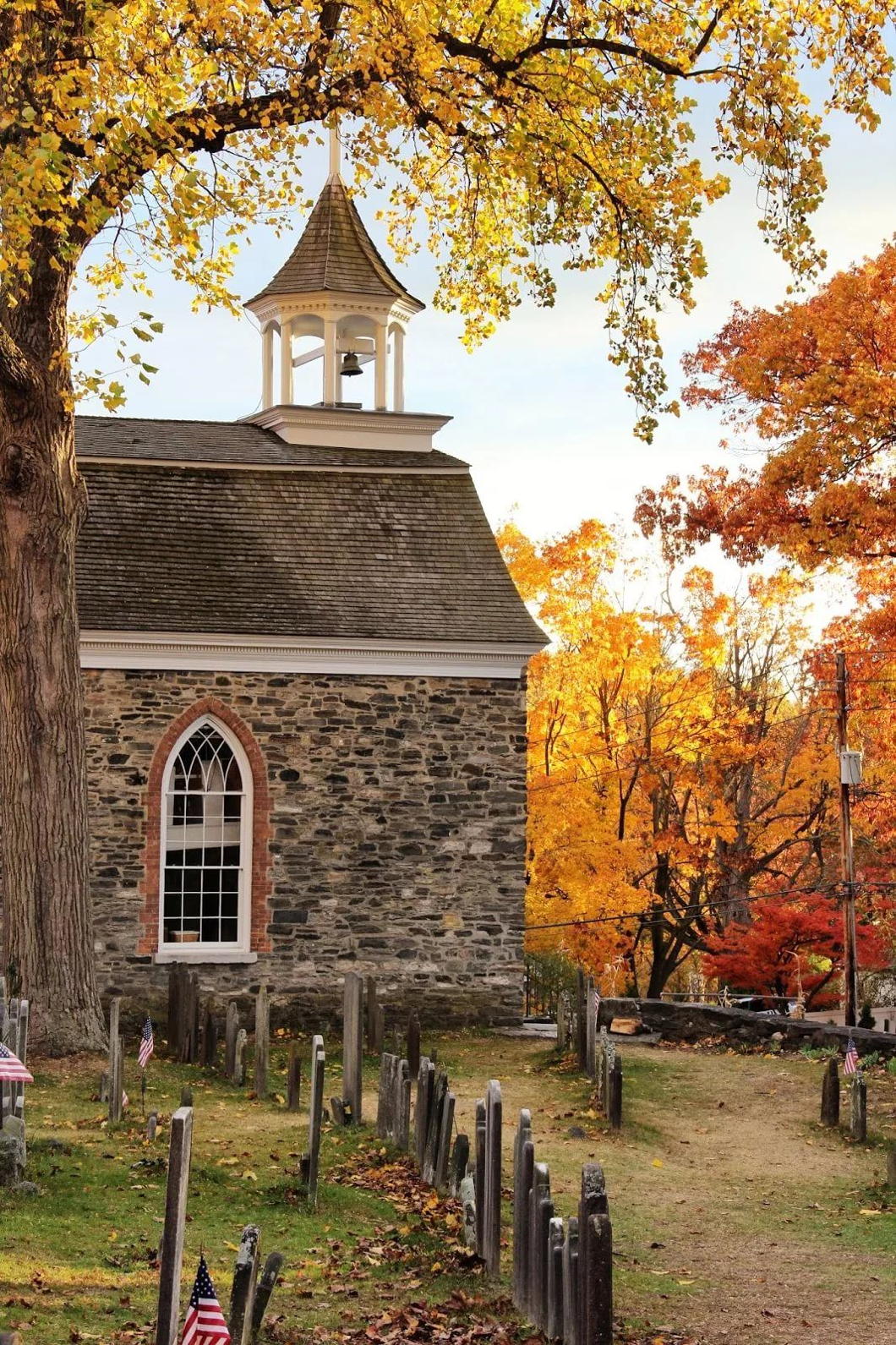
If there is any season which is plus New-Yorkaise que les autres then it must be autumn, and around the time of Hallowe’en in particular.
Thanks to the fertile imagination of Washington Irving, buried in the cemetery of the Old Dutch Church in Sleepy Hollow, the Hudson Valley is the spiritual home of this ancient Celtic feast now implanted in the New World.
The other day I dusted off the huge single-volume complete works of Irving – almost the size of an old Statenvertaling – and re-read his most famous tale, “The Legend of Sleepy Hollow”.
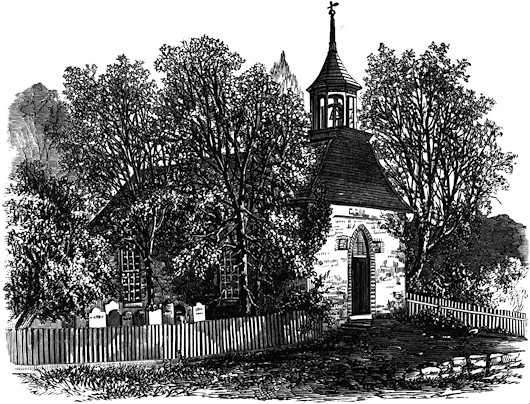
Irving describes the position of the Old Dutch Church:
The sequestered situation of this church seems always to have made it a favorite haunt of troubled spirits. It stands on a knoll surrounded by locust trees and lofty elms, from among which its decent whitewashed walls shine modestly forth, like Christian purity beaming through the shades of retirement. A gentle slope descends from it to a silver sheet of water bordered by high trees, between which peeps may be caught at the blue hills of the Hudson. To look upon its grass-grown yard, where the sunbeams seem to sleep so quietly, one would think that there at least the dead might rest in peace.
On one side of the church extends a wide woody dell, along, which raves a large brook among broken rocks and trunks of fallen trees. Over a deep black part of the stream, not far from the church, was formerly thrown a wooden bridge; the road that led to it and the bridge itself were thickly shaded by overhanging trees, which cast a gloom about it even in the daytime, but occasioned a fearful darkness at night. Such was one of the favorite haunts of the Headless Horseman, and the place where he was most frequently encountered.
The tale of the Headless Horseman is now, partly thanks to various popular reinterpretations of it, well known even outside the Hudson Valley. I remember as a wee lad growing up in that part of the world our Scout uniforms had a badge bearing the image of the “Galloping Hessian”.
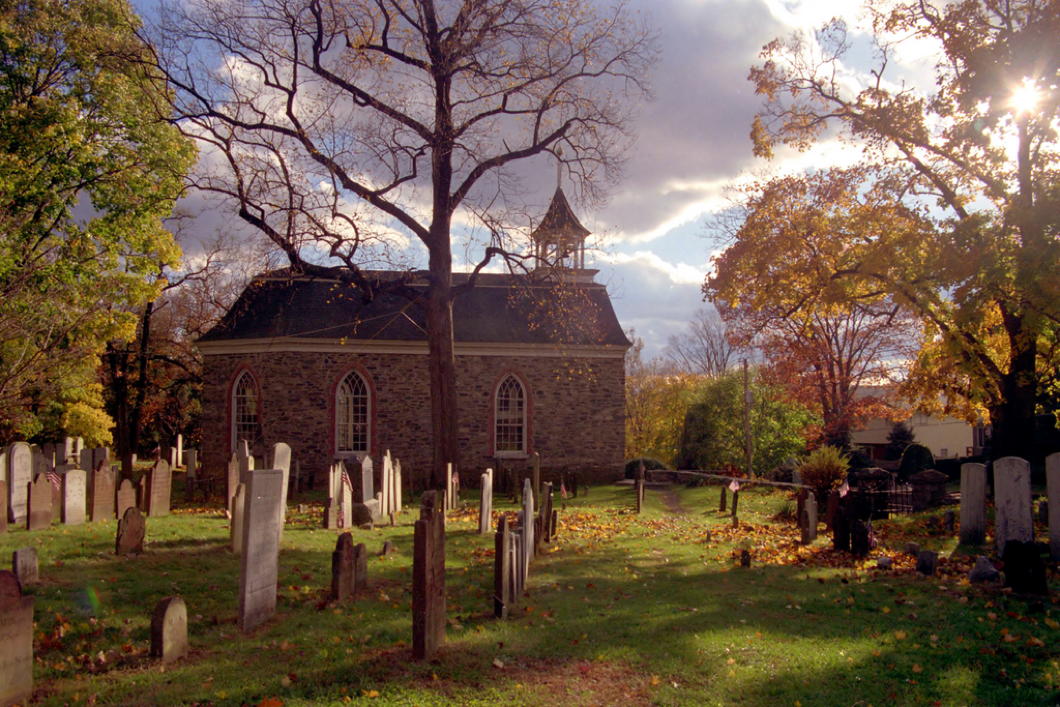
UNHQ
United Nations Headquarters, New York
AMONG THE LEGACIES of my New York childhood is a sentimental fondness for the United Nations, and especially for the stylish swank of its headquarters at Turtle Bay in Manhattan. The name of the small neighbourhood originates (scholars tell us) not from the turtles which were once abundant upon the shores of the island and its environs but rather from a small inlet shaped, in the eyes of the old New Netherlanders, like a particular type of bent or curved blade called a deutal knife in Dutch. The woods and meadows surrounding Deutal Bay were easily rechristened as Turtle Bay once the English established their ascendancy and New Amsterdam became New York.
Over the course of the eighteenth and nineteenth centuries the tiny port founded at the bottom tip of Manhattan grew further and further up the island, swallowing up the old colonial villages like Greenwich, Bloemendal, and Haarlem, or farms like Turtle Bay, Inclenberg, and Kip’s Bay, until as today there is just one giant urban mass stretching from the Battery at the bottom tip of the island all the way to Spuyten Duyvil at the top.
While New Yorkers like to think that there is no possible competitor to the city’s status as capital of the world, there was of course a great debate over where the United Nations should be based. Geneva was an obvious candidate, as the beautiful art-deco Palais des Nations provided a ready-made home for an international organisation. The fathers of the UN, however, did not want to associate themselves so closely with the failure of the old League of Nations the Palais was built for, and so the Geneva option was nixed.
Given the shifting balance of world power, it was thought a New World site might be a wiser choice than a European location. Quebec, as I have written previously, was an obvious possibility as the city is a beautiful melange of Old World and New, and for Europeans was easily accessible by passenger liner. Australia, New Zealand, and the Pacific states, however, were in favour of San Francisco for geographic reasons to their obvious benefit, and cited the Californian city’s hosting the 1945 Conference on International Organisation which brought forth the UN Charter.
Fears that the United States would refuse to participate fully in the UN (as with the League of Nations of old) almost guaranteed that the US permanently hosting the world body in order to solidify American resolve in the UN’s favour, but the squabble over precisely where dragged on. The Rockefeller family intervened by offering to the fledgling United Nations Organisation, at no cost whatsoever, a large riparian site at Turtle Bay on the banks of the East River, largely consisting of slaughterhouses at the time. Settled then, but what would the complex look like? (more…)
New Yorkers: See New York!
Old-School Ads Employed for City’s Internal Tourism Campaign
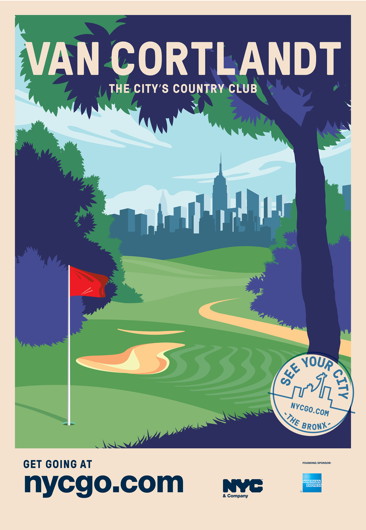

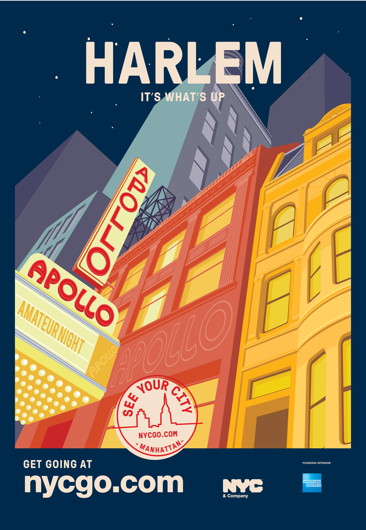
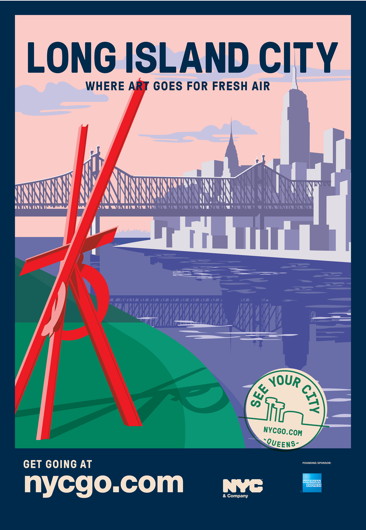
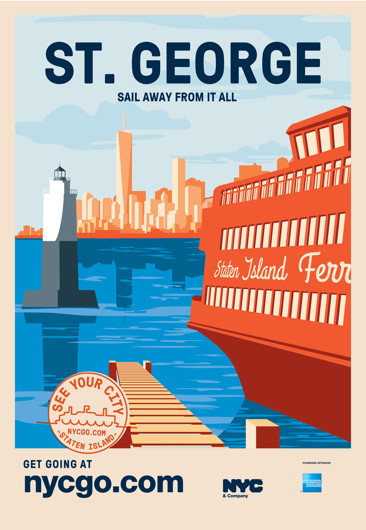
NYC & Company, the official tourism and marketing board of New York City, has cottoned on to the fact that in such a vast metropolis many parts of the city are virtually unknown to the natives of whichever particular borough.
They recently launched the ‘See Your City’ campaign encouraging New Yorkers to visit places perhaps less familiar to them within their own city. Part of the campaign involves the above series of posters for display in bus shelters.
The style evokes old-school travel posters of the 1920s & 30s, and NYC&Co commissioned one for each of the five boroughs.
Elsewhere: Adweek | New York Times | Untapped Cities | NYCgo
End of the Line for Rizzoli Bookshop
Another New York bookshop bites the dust
In New York, good things are only allowed to last a little while: eventually they must all be destroyed. The latest to add to the pile is the Rizzolli bookshop on West 57th Street, which has received notice that the landlords intend to demolish the 109-year-old structure in which the bookshop is housed.
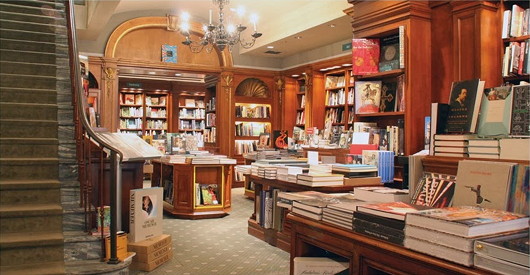
Rizzoli, publishers of some of the finest and most luxuriously printed books on the market, have not yet said whether they will be opening shop elsewhere.
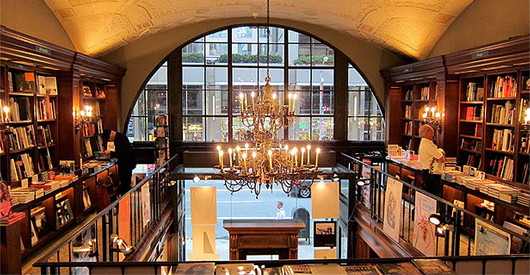
If so, it would be the second move for the shop, which opened in 1967 at 714 Fifth Avenue (below), just around the corner. A developer tried to tear that building down as well, but preservationists managed to have the façade, with its lalique glass, incorporated into the new tower. It’s now home to Henri Bendel.
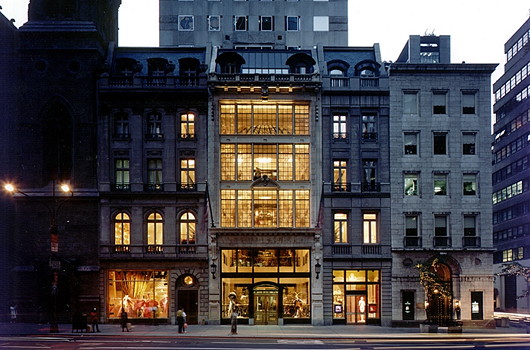
Other New York bookshops to close in recent years include the Librairie française, Coliseum Books, Gotham Book Mart, Urban Center Books, and further back more venerable institutions like Scribner’s and Brentano’s.
Top three photos: Mais Uma Pagina
The Cathedral of the Bronx
The Augustinian Church of St Nicholas of Tolentine
The Church of St Nicholas of Tolentine dominates the busy intersection of University Avenue and West Fordham Road in the Bronx. The parish was erected by the archdiocese in 1906 and has been served by Augustinians ever since then. The present church is a modern gothic creation from 1927, and probably one of the most handsome Catholic churches in the borough — it is often nicknamed “the cathedral of the Bronx”. (Though that style is sometimes also ascribed to St Jerome’s in Mott Haven).
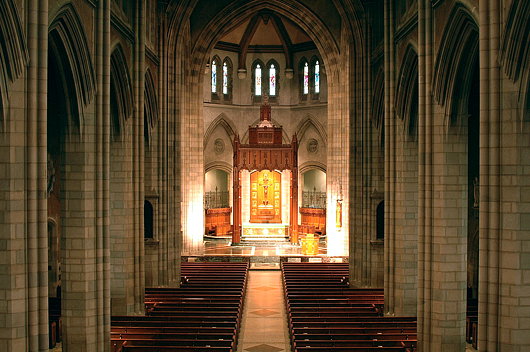
The church is of suitably grand proportions, but the effect is somewhat diminished by the unfortunate use of bulky wooden pews. They are ill-suited to such a large church, and detract from the spaciousness of the interior. This is unfortunately a very frequent problem in the United States, where clumsy pews crowd even great cathedral churches like St Patrick’s in Manhattan or the glorious Cathedral Basilica in St Louis. Regardless, St Nicholas of Tolentine is a splendid ornament in this borough of many churches. (more…)
Yorkville Promenade
One of the thorough-going irritations of New York is that, for all its glories, one can’t help but feel that the individual, the human being, is simply not the priority there. This intriguing and worthwhile proposal from Massengale & Co, Dover Kohl & Partners, and H. Zeke Mermell, if executed, would go a long way to making the Upper East Side of Manhattan a much more people-friendly place.
It takes its inspiration from the Ramblas of Barcelona, one of the greatest streets in the world. While their written proposal (below) is couched in anti-car talk, I frankly don’t care about reducing auto use in New York City. The much more important priority is increasing people places in the city; that is, increasing the amount of public space in which it is clear that people have priority. (This will almost certainly have the same effect as the intention of reducing auto use, I’ll concede.) The city has taken some admirable steps in that direction in recent years (the increasing in pedestrian-oriented spaces, including previously unheard-of outdoors tables and chairs for the use of all and any).
The Yorkville Promenade proposal for Second Avenue is eminently suitable to its particular place and location, especially coupled with making First and Third Avenues bi-directional. It is a worthy attempt to tame and civilise streets that all too often feel quite inhumane, and should be enacted.
Yorkville Promenade on Second Avenue
FOR SO MANY REASONS, we must reduce auto use in New York City. Studies for Mayor Bloomberg showed that living on a high-traffic avenue in Manhattan is un-healthy, particularly for our children. To add insult to injury, 80% of Manhattan residents do not own cars, and only 20% of our out-of-town commuters drive to work. Our ugly, unhealthy avenues are more for the benefit of others than Manhattan’s workers and residents.
Most Manhattanites live in small apartments and spend a lot of time in public life. When the weather is nice, we spend lots of money to dine next to places designers call “auto sewers”: noisy, smelly streets made to move cars quickly, with wide, one-way lanes and no parking at rush hour so that the speeding cars and trucks are inches from the sidewalk. It doesn’t make much sense.
Then there are the problems of Climate Change and Peak Oil. We have built our way of life on an inexpensive but non-renewable resource that is simultaneously starting to run out, becoming more expensive than we can afford and changing the earth for the worse.
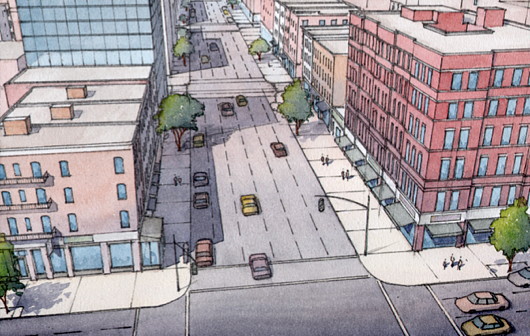

The New Yorkville Ramble
The Yorkville Ramble is an idea for a new way to rebuild Second Avenue, after the completion of the new subway under construction below the avenue. Inspired by the famous Ramblas of Barcelona, the design gives the center of the wide avenue that was once two-way to a new car-free linear park for walking, biking, sitting, dining and people watching. Cafés and restaurants along Second Avenue would be licensed to have tables on the center island. Narrow traffic lanes and short term parking lanes to each side would let cars and deliveries come and go while eliminating speeding traffic from Second Avenue.
Construction would be timed to work with the construction phasing for the subway, which will initially run from Sixty-Third Street to Ninety-Sixth Street. The Ramble would be a special place that enlivens the Manhattan grid, like Broadway on the Upper West Side and Park Avenue on the Upper East Side, with a vibrant street life unlike staid Park Avenue.
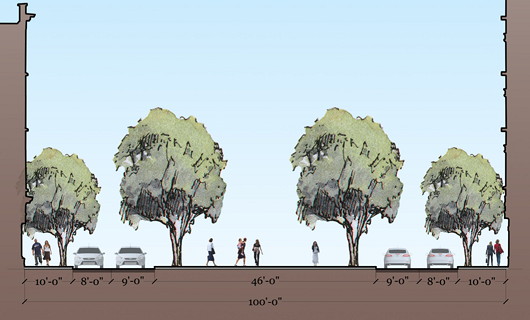
WEST OF THIRD AVENUE ON THE UPPER EAST SIDE, the introduction of Madison and Lexington Avenues into the normal city grid produced shorter blocks that made the grid more interesting for pedestrians and thereby increased the value of the real estate.
Yorkville’s longer blocks are less pedestrian-friendly, and Second and Third Avenues both used to have that New York oxymoron–the elevated subway–depressing real estate values and building quality for decades. In recent decades the area has boomed, and the Yorkville Ramble will give it a linear neighborhood center unique in New York City, drawing from both the neighborhood and the access provided by the new subway line.
Proposed Congestion Zone
Mayor Bloomberg and the New York City DOT have proposed a congestion zone for the city. London’s congestion zone shows that roads like the Second Avenue design proposed by the DOT will then be oversized and inappropriate for the amount of traffic they will have. First and Third Avenues could go back to being two-way, as they once were, and traffic would move in a more civilized fashion. We don’t need to make express auto routes in and out of the city when we have the best mass transit in the country.
The bicycle lane in the DOT’s new design for Second Avenue is a good idea, but the design for the road shown above is still a traffic engineer’s dream, with wide, one- way lanes and no parking shielding the pedestrian from the speeding cars, buses and trucks. Studies show that walkers don’t like the visual clutter of all the signs and multi-color lanes that the engineers want. Walkers also of course want wider sidewalks.
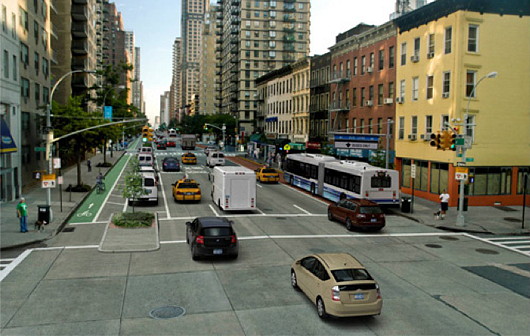
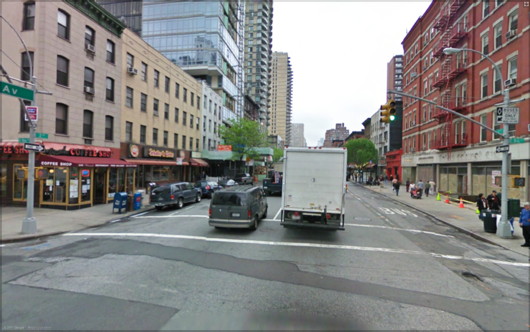
Conclusion
Second Avenue is currently torn up for the subway con- struction and its rebuilding will start in the next few years. Combined with changing attitudes and perceptions about the car in the city, that makes now the perfect time for a humane and beautiful new type of post- auto road for New York.
Choral Concert in N.Y.
Manhattanites and denizens of the neighbouring boroughs and counties might be used to going to the Church of St Thomas on Fifth Avenue to hear the best choir in New York, but this evening the house of worship is hosting the Westminster Cathedral Choir, the best choir in London. If you haven’t made plans for the evening, there are still tickets available here.
Tonight’s concert will feature some Victoria, some Elgar, some Guerrero, and more, but most appealing to me is the Christus vincit by James MacMillan — Scotland’s greatest living composer. If you share my tastes, you avoid music by any composer who hasn’t been dead at least half a century, but MacMillan is good enough to be elevated to the realms of the honorary deceased. He’s also commented on this blog in the past!
Caffe Reggio
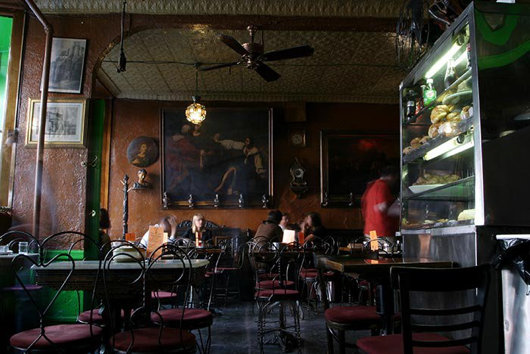
In August, I enjoyed a lazy, espresso-fuelled afternoon in this place with Herr Doktor Zmirak and D. Riccardo.
Catholic Ambassadors to the U.N.
Diplomats’ group hears Latin Mass at St Agnes
On Sunday 21 August 2011, the Church of St Agnes on 43rd Street in Manhattan was host to a group of Catholic ambassadors to the United Nations for the regular 11:00 Extraordinary Form Mass, offered by Fr. Richard Trezza OFM. (Fr. Cid, a recently ordained Franciscan priest was also in choro). The group included representatives from Grenada, Haiti, the Philippines, Korea, the United Kingdom, and Japan.
The informal gathering, formed just this year, is open to Catholic Permanent Representatives and Deputy Permanent Representatives — the first- and second-highest ranking diplomats at national missions to the U.N. — and has heard Mass at a number of different parishes around Manhattan. (more…)
Reviving Manhattan’s Parisian Splendour
The new Ralph Lauren building at Madison & 72nd
“PRACTICALLY PERFECT in every way” was how the nanny Mary Poppins described herself in the Disney film, but fashion designer Ralph Lauren has given birth to an architectural grande dame on the Upper East Side that might justifiably make a similar claim. In this age of fashionable-today-dated-tomorrow starchitecture, the Bronx native has swum against the current and delivered for the people of New York a most welcome piece of architecture with his new store on the corner of Madison Avenue and 72nd Street.
Those familiar with the neighbourhood might be a bit confused: doesn’t Ralph Lauren already have a beautiful French chateau on that street corner? Worry not, the old Rhinelander mansion has not been demolished. Rather, its interior was recently given a ‘masculine makeover’ so shoppers can peruse and purchase any of Ralph Lauren’s men’s lines there.
Across the street, meanwhile, with his new women’s store, Ralph Lauren has reinvigorated Manhattan’s faded glory with a new injection of Parisian splendour. The unremarkable “taxpayer” two-storey on the site was razed and a completely new four-storey structure has risen in its place. Two smaller wings flank the middle, which is recessed above the ground floor’s triumvirate of skilfully curved arches. The two central storeys above are topped by a more reserved attic, with the facade clad in American-sourced limestone throughout. (more…)
Dempsey Heiner (1927–2008)
THIS MONTH IT’S already three years since the death of dear Dempsey Heiner, who went to his eternal reward on 16 January 2008. Demspey was a real gem of a man: a scholar and a gentleman, capable of relaying brilliant insights easily and who, at least once, exhibited his skill in the art of the gentlest intellectual rebuke of a presumptuous young intellectual fellow-Catholic (i.e.: yours truly), backed up with a remembered citation of François Mauriac.
Dennis Clinton Graham Heiner was born in New York in 1927 to Robert Graham Heiner and Frances Eliot Cassidy, friends and fellow-travellers of Margaret Sanger, the notorious racial eugenicist & founder of Planned Parenthood. Dempsey’s parents enrolled him at St. Bernard’s, where he was in the same year as George Plimpton, the founder of the Paris Review and twentieth-century embodiment of the gilded amateur. Plimpton (who died in 2003) described Dempsey as “the brightest boy in the class, a genius” and remarked that since leaving school he remained something of an enigma. (more…)
Autumn by the Hudson

Some consider winter the time of death and desolation but I disagree. Winter for me is the incubation, the child in the womb, the seed beneath the soil waiting for the moment to sprout. Autumn, rather, is the time of melancholy and retrospection. Most of the trees here in New York are now bare, but before the leaves fell our friend the Brooklyn-based graphic & web designer Emily E. Owen (website here) caught these photographs of New York in the brilliant crepuscular light. The views are from Fort Tryon Park at the very top of the isle of Manhattan. (more…)
Unbuilt St. Thomas
Lord & Hewlett’s Competition Entry for the Church of St. Thomas
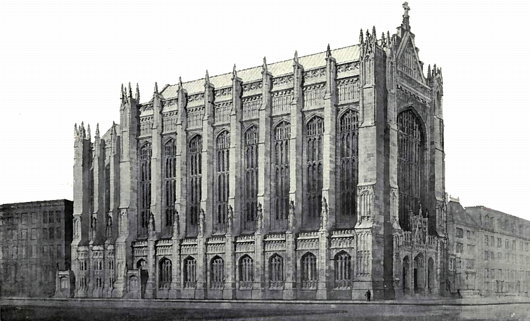
THE CHURCH OF Saint Thomas on the corner of Fifty-third Street and Fifth Avenue in New York is one of the artistic gems of the city: both as an architectural marvel designed by Ralph Adams Cram & Bertram Grosvenor Goodhue and as a musical paradise with its renowned choir of men & boys formerly under the tutelage of Gerre Hancock. (It’s foolish for anyone in the city during Advent to miss the Service of Lessons & Carols). The parish of the Episcopal Diocese of New York was established in 1834, and its first building was erected in the Gothic style on the corner of Broadway and Houston.
In 1870, after that neck of the woods became less fashionable, the congregation moved to its current location at 53rd & Fifth, to a new Gothic edifice by Richard Upjohn. That church hosted the marriage of Consuelo Vanderbilt to the 9th Duke of Marlborough. When it burned down in 1905, a competition was held to select the design of the new Church of St. Thomas, then perhaps at the peak of its high social status among Manhattan’s Protestant congregations. (more…)
A School Chapel on Long Island
St. Anthony’s High School, South Huntington, L.I.
“I have a general disgust for Catholic architecture since the 1950s,” says Brother Gary Cregan, the Franciscan friar who is principal of St. Anthony’s High School in South Huntington. The friar was quoted by the once-great New York Times in a 2008 article on the new chapel built by the Catholic school on Long Island, recently featured on the NLM blog. The Franciscans, according to the Times, “believe that the new chapel, with its soaring 30-foot ceilings, will teach teenagers that they are ‘worshiping God, not each other.'” Many of the chapel’s furnishings were bargain finds on eBay including the confessionals, the pews, a 110-year-old stained-glass window, and a century-old statue of St. Anthony. A new bell for the chapel’s tower would’ve cost $20,000, but Brother Gary (or “Mr. Cregan” as the newspaper referred to him) found an old one for $4,000. (more…)
Carbuncle Alert in Queens
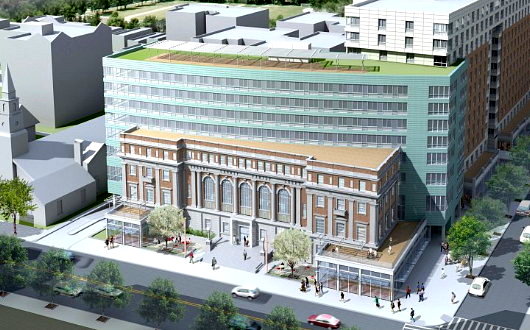
Our carbuncle alarm, which went haywire over the Brooklyn Museum’s offensive new entrance, has alerted us to a new monstrosity nearing completion in the adjacent borough. (more…)
The Old New York Observer Building
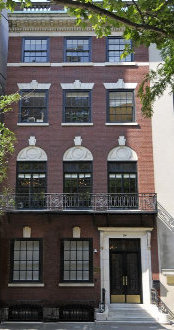
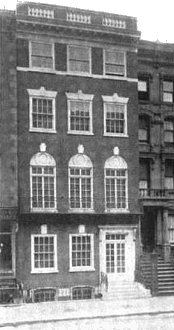
No. 54, East Sixty-fourth Street
“FOR 17 YEARS,” writes Peter W. Kaplan, “since The New York Observer entered city life in 1987, it has existed within a red brick and white-marble-stepped townhouse on East 64th Street.” Designed by Ernest Flagg and Walter B. Chambers during their brief partnership, No. 54 East Sixty-fourth Street (between Park & Madison) was built in 1907 as a private residence for Robert I. Jenks. The AIA guide accurately describes it as “four stories of delicate but unconvincing neo-Federal detail… a minor Flagg.” In 1947, the townhouse was converted into offices for the Near East Foundation, which was founded in 1915 to provide relief for Armenian refugees from the Ottoman Empire and later took on greater responsibilities in North Africa and the Levant. It was then bought by Arthur L. Carter, the founder and publisher of the New York Observer for use as the salmon-tinted newspaper’s headquarters.
In 2004, the Observer moved down to Broadway, two blocks south of the Flatiron Building (and just a few blocks up from The New Criterion whose founder, Hilton Kramer, was for nearly two decades the art critic for the Observer). The townhouse was sold by Carter to the Russian-born Janna Bullock, real estate developer & sometime Guggenheim foundation board member for $9.5 million in the year the newspaper moved out. In 2005, Bullock renovated the building and had it used at the Kips Bay Decorator Show House for the year before selling it on to the Irish investor Derek Quinlan for $18.74 million. Quinlan put it on the market for $36 million but last year the asking price was chopped to $27 million.
Twenty-five feet wide, five stories, and with over 10,000 square feet, No. 54 was probably the only newspaper headquarters to feature nine working fireplaces, rosewood panelling, and oak wainscoting. But the best feature, by a mile, is the splendid iron-railed staircase, which looks like it was lifted straight from Paris. Elegant and graceful, a rare century-old survival in Manhattan. (more…)
A Collector’s Apartment
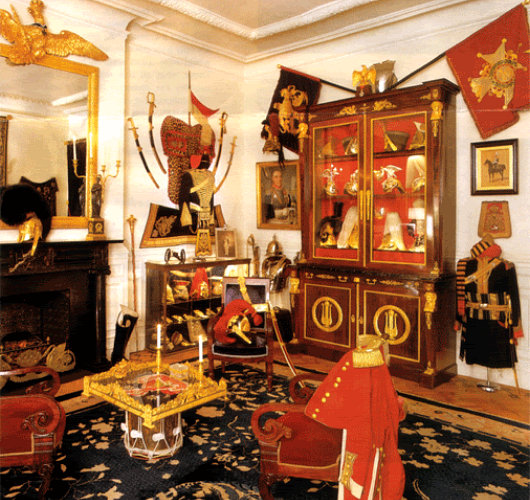
These photos come from an issue of Architectural Digest from the 1980s that some chap scanned and put online. The article that these pictures accompanied was about the New York apartment of a collector specialising in military items, but unfortunately the scanner did not post any further information. (more…)
120 East End Avenue
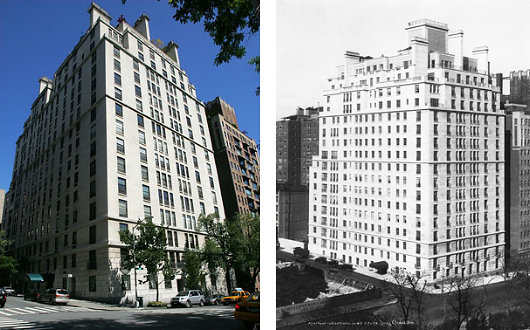
BACK IN MY school days, there was a girl in this building who threw rather good parties. Even at a decent event, however, one or two are bound to show up that really ought not to have done so, and at one of these parties at 120 East End Avenue just such a person got wildly drunk, seized a half-full bottle of vodka (Smirnoff, I believe) and launched it out the window. As luck would have it, gravity deposited the vessel many floors below, landing right on top of windshield of the doorman who happened to be serving that night.
Now, doorman relations are important in Manhattan (as apartment building owners are quite aware). When Mr. & Mrs. Smith jaunt off to Paris, leaving Jenny at home, and some twenty-odd young lads & lasses show up requesting admittance to the Smiths’ place — the doorman knows all and sees all, and one must ensure that, upon Mom & Pop’s return, he doesn’t tell all. (more…)
Search
Instagram: @andcusack
Click here for my Instagram photos.Most Recent Posts
- Sag Harbor Cinema March 26, 2025
- Teutonic Takeover March 10, 2025
- Katalin Bánffy-Jelen, R.I.P. March 3, 2025
- Substack Cusackiensis March 3, 2025
- In the Courts of the Lord February 13, 2025
Most Recent Comments
Book Wishlist
Monthly Archives
Categories


